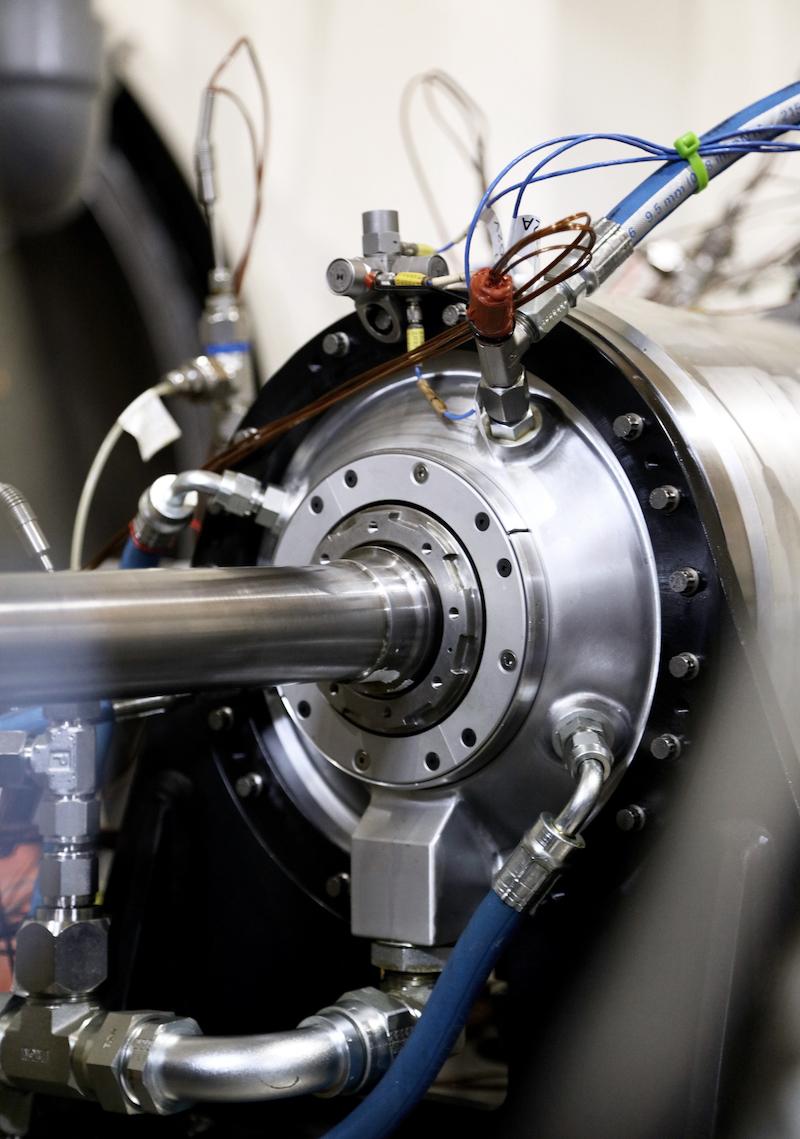
FARNBOROUGH—GE Aviation is preparing for the start of ground tests of a modified hybrid-electric CT7 turboprop variant following the completion of what the engine-maker says is the world’s first test in simulated altitude conditions of a megawatt-class and multi-kilovolt hybrid-electric propulsion system.
The simulated altitude tests, conducted at NASA’s Electric Aircraft Testbed (NEAT) facility in Sandusky, Ohio, formed part of the agency’s Electrified Powertrain Flight Demonstration (EPFD) project for which GE was awarded a $179 million contract in September 2021. Under EPFD, GE is developing a megawatt-scale hybrid-electric propulsion system which will be flight tested on a Saab 340B powered by modified CT7-9B turboprops.
“The NEAT tests truly demonstrated the maturity of the technology that we developed to operate as an integrated system at flight altitudes up to 45,000 ft. So, it's a massive milestone on our journey towards having electrified flight in commercial use,” says Arjan Hegeman, general manager of Advanced Technologies for GE Aviation.
Tests of the high-power, high-voltage system included two sets of electric motor/generators, power converters, power transmission and power control systems and successfully demonstrated performance and operation of the components in a replicated flight environment. The work “proved that it can work reliably at altitude,” Hegeman says.
Operational modes evaluated included power transfer from side to side, power assist to a simulated engine and aircraft power generation. The implementation of energy storage was also simulated. Speaking to Aviation Week, Hegeman adds, “the energy flows in different directions. You can you use it to run the motor for the electric assist, or you can drive the motor to generate that electricity to flow it into the battery. So, it's back and forth, and there are transients there as well. So all those situations have been tested.”
The tests not only helped validate the hybrid-electric propulsion system architecture, but are a key step in GE Aviation’s technology programs with NASA to develop a hybrid electric propulsion system for flight tests later this decade and for entry into service in the mid-2030s. The company is looking to develop commercial hybrid-electric turboprops for future regional transports as well as apply the technology towards mildly hybridized turbofans as part of the on-going CFM RISE open fan engine program.
“This is a world first from not just a megawatt-class electric propulsion system perspective but also from the kilovolt piece,” says Hegeman. Megawatts measure electrical power, while kilovolts measure the difference in electrical potential between two points. Although a kV-class system enables high efficiency and specific power, they are more difficult to manage at altitude because of several factors including lower insulation levels in the reduced density of the upper atmosphere.
“Running high power levels of energy over larger distances, say through a wing into a fuselage or to a battery, you want that to be as efficient as possible—and that's where the kilovolt comes really into play. The beauty of it is once you get that working and figure out how to get it working at altitude, it's very easy to downscale,” says Hegeman. “You see a lot of news around flight tests that are being performed and systems that are operating. All of them are low voltage and low power. What we're doing is very, very different and that really sets us up to implement this system [for future single-aisle aircraft].”
EPFD testing has now switched to safety-related evaluation of the components and the integrated system in areas such as electromagnetic interference and vibration testing. This work, which is being conducted at GE’s EPISCenter (Electrical Power Integrated Systems Center) in Dayton, Ohio, will focus more on tolerance to shocks, humidity levels throughout the flight environment and other extreme conditions.
“We'll then do ground testing, where the actual CT7 and the electric motor and the power electronics are sitting in the same nacelle on a test stand at Peebles,” Hegeman says, referring to the company’s outdoor test facility in Ohio. “Then it goes on the aircraft,” he adds. For this phase GE is partnered with Boeing and its subsidiary Aurora Flight Sciences, which is providing the aircraft, modification work, aircraft integration and flight-testing. GE says this work includes nacelle manufacturing, flight-deck interface design and software, aircraft-level performance analysis, and systems integration. BAE Systems will provide energy management components, including the battery and cabling. Flight tests are expected to begin in the mid-2020s.
Tim McCartney, director of aeronautics at NASA’s Glenn Research Center, adds that the demonstrations at NEAT “will also identify and address gaps in regulations and standards and acquire necessary ground and flight test data to advance design and modeling tools pertinent to future aircraft products with an EAP system.”

